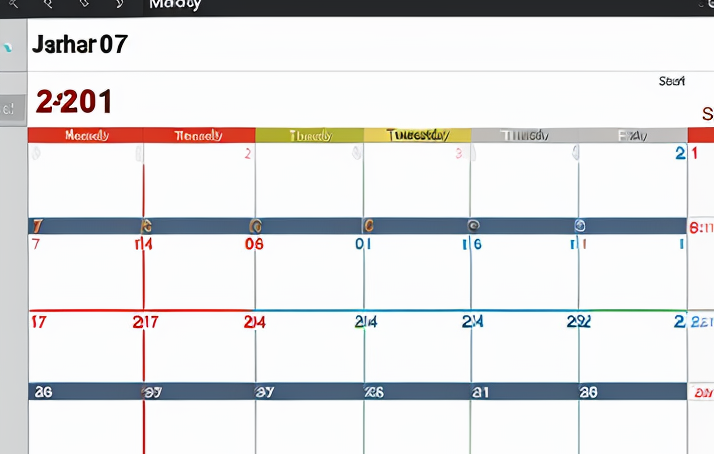How Long Does Human Resources Take To Hire Someone
The hiring process begins with a job description. It’s the first step in the journey. A good description attracts qualified candidates. Often, teams rush this part. Rushing leads to unclear expectations. Candidates may not understand the job fully. This step sets the stage for everything that follows.
Are You a Good Fit for This Job?
Internal discussions also matter. Teams must agree on key skills. They may argue about must-haves. Communication is vital here. Misunderstandings can cause major delays. It can slow down the entire recruitment timeline. This chaos can lead to the wrong candidates being chosen.
- Some common pitfalls include:
- Vague job descriptions.
- Lack of clear team input.
- Ignoring past hiring data.
These mistakes often lengthen the hiring process. Candidates lose interest if clarity is missing. Lots of talent can simply slip away. Teams should value this early phase more.
Planning is essential. Good planning saves time later. The importance of a well-crafted job description cannot be overstated. Think twice before publishing. Once it’s out there, it’s hard to change.
For those interested in the analytical aspects of hiring, understanding if mathematical skills play a role in Human Resources can be quite insightful.
Another aspect to consider is timeline management. Job postings should have a realistic duration. Too long may cause candidates to forget. Too short can leave the team scrambling. Balance is key in every step. Apply past lessons to improve the future process.
As we start, don’t forget feedback from previous hires. This data helps in crafting newer descriptions. Evaluate what worked and what did not. Use those lessons whenever possible. This leads to a more focused approach.
Hiring starts as a journey. Exploring all options ensures success. Communication and planning are crucial in these early phases. Teams must recognize pitfalls and work together. Keep candidates engaged and informed as we move forward. Crating a solid foundation can avoid future headaches.
The Recruitment Timeline: A General Overview

The hiring process unfolds step by step. Each stage takes time. First, a company must write a job description. This usually takes a week. In this early phase, clarity matters. Job postings follow. Companies share these on various platforms. This can take anywhere from few days to a week.
- It’s common to see postings on sites like LinkedIn.
- Some posts even go on social media.
Once the applications start flowing in, the fun begins. HR reviews resumes, often within two to four weeks. They seek skills that match the job. The number of resumes affects timing. For example, a tech firm might receive hundreds of applications. This could delay the next steps.
After narrowing down candidates, HR conducts initial interviews. These typically last one to two weeks. Interviews can be in person or virtual. Candidates appreciate the flexibility.
Companies can then schedule second interviews.
The second round may introduce team members. These interviews can add another week or two. Time spent in this stage varies by industry. A retail hire might happen faster than in healthcare. Next comes the final decision. This can take several days. Sometimes, HR needs more time to consult.
In some cases, background checks matter. These checks can extend the timeline by one to two weeks.
- Some sectors require thorough vetting.
- But others might skip it.
Let’s look at some case studies. In tech, companies may move quickly. They aim to catch top talent. Education might move slower due to regulations. They face additional layers of approval. Overall, the hiring process can range from a few weeks to a few months. It’s a balancing act.
Work From Anywhere Opportunities:
All in all, knowing this timeline helps candidates prepare.
The Influencers of Hiring Speed (Analysis)
Hiring speed is not just a number. Many factors play a role.
- Organizational Size: Larger companies take longer. They often have many applicants.
- Complexity of the Role: Specialized roles need more time. Companies assess skills better.
- Internal Bureaucracy: Layers of approval slow things down. More people mean more meetings.
- External Market Conditions: Job market trends influence speed. If many jobs exist, hiring may be quicker.
For example, a big tech firm may take weeks to hire. They often interview many people. A small startup might hire faster. They can make quick decisions. Data shows that the average hiring process lasts 30 to 45 days. Many roles sit open longer than that. Searching for the right fit is key.
Hiring marketing roles can take longer than expected. Companies want creative minds. They can interview more applicants. That creates a longer timeline. Furthermore, an HR department may face slow internal processes. Often approvals come from above. Each layer adds days to the timeline.
Market conditions play a significant part as well. Employers rush to fill spots during booms. During downturns, hiring slows down. Consider a retail company. They may need seasonal workers fast. They can change their approach quickly.
In another instance, organizations with flexible procedures hire faster. They empower teams to make decisions. Less red tape brings quick hires. Internal estimates vary widely. Many firms provide no clear timelines.
In conclusion, understanding these factors is essential. They shape how fast a company can hire.
Success Stories: When Things Click

One company, TechCorp, transformed its hiring. They were facing long delays. Candidates grew frustrated. HR needed change. They decided to cut the clutter. TechCorp set clear goals. They hired specialists to streamline the process. It worked. The hiring time dropped by 40%. Also, candidate experience improved.
At another company, HealthNow, HR faced a backlog. Applicants felt lost in the system. The team struggled to communicate. They decided to adopt technology. HealthNow integrated automation tools. This made a big difference. Instead of weeks, they shortened timelines to days. HR professionals noted happier candidates.
Sarah, an HR manager at EcoGoods, shared insights. She used data to improve hiring. Sarah found screen times were too long. She reduced interview stages from three to two. This simple step saved hours. Candidates felt less stressed, feeling valued instead.
- These are the strategies that worked for EcoGoods:
- Data analytics for process insight.
- Clear communication with candidates.
- Shorter interview rounds.
- Regular feedback to candidates.
Another success story comes from BuildRight, a construction firm. They were aware that waiting too long meant losing talent. BuildRight implemented a buddy system. New hires met existing employees before interviews. This created a welcoming environment. Applicants felt more at home, boosting confidence. Potential hires moved through interviews swiftly.
Results showed improvements across the board. Team engagement picked up. Employees felt more involved in hiring. Candidates reported faster decisions. It made EcoGoods a favorite for job seekers.
Jim, an applicant at BuildRight, shared his story. He sensed the warmth in interviews. The atmosphere felt inviting, not stressful. Jim got an offer the same week! This was a big win for both sides. Fast decisions helped BuildRight grab top talent.
In conclusion, these stories demonstrate effective strategies. Companies that embrace change thrive. They serve as inspirations. Hiring can be fast, efficient, and positive.
Lessons from the Field (Reflective commentary)
Many valuable lessons emerge when analyzing the hiring process. First, streamline your job descriptions. Common language speaks to more candidates. Next, set a clear timeline. Candidates appreciate knowing what to expect.
- Communication is key.
- Frequent updates create trust.
- Timeliness matters in recruitment.
Hiring teams must collaborate effectively. An engaged team leads to quick decisions. Avoid unnecessary meetings. They can waste time and slow down hiring. Technology helps. Automated tools can speed screenings. Feedback loops are crucial. They allow teams to learn and improve.
When you include diverse voices, you enhance the talent pool. Isn’t it fascinating how varied perspectives enrich choices? Employing data can illuminate trends. Analyze past hiring metrics for better results.
Success isn’t always swift.
Sometimes, good fits take longer to find. Patience leads to better choices. On the other hand, overanalysis can be detrimental. Snap decisions can lead to regrets. Employ an adaptable mindset. It helps navigate unexpected challenges.
Another key point is candidate engagement. Interested candidates are often happier. Engaged candidates share their experiences. Consider each candidate’s application experience. Pleasant experiences foster goodwill. Reflection on the process is invaluable.
Employers can gain insights by reviewing what worked or failed.
- Gather feedback from candidates.
- Review your recruitment steps.
- Adapt based on what you’ve learned.







